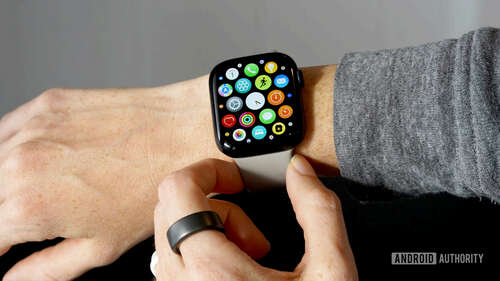
Kaitlyn Cimino / Android Authority
If you’re shopping for a smart wearable, chances are that smartwatches are atop your list. However, they’re not your only option. Smart rings remain a left-field choice but offer plenty of advantages over their wrist-worn cousins. With the Samsung Galaxy Ring coming soon and Apple considering the form factor, now is a good time to understand their pros and cons. So, should you buy a smart ring, or are traditional smartwatches the only viable choice? I’ll discuss these points in our smart ring vs smartwatch guide.
Smart ring vs smartwatch: Comfort, discretion, and design
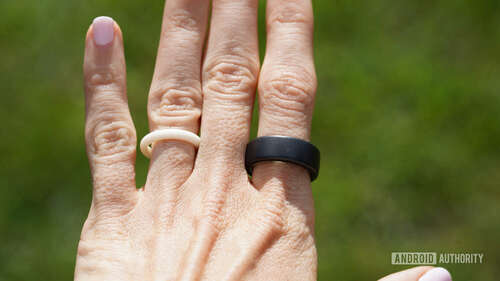
Kaitlyn Cimino / Android Authority
The obvious fundamental difference between smart rings and smartwatches is how you wear them. As their names suggest, smartwatches are traditionally worn around the wrist, while smart rings wrap around a finger.
Thanks to their smaller footprint, smart rings offer inconspicuous aesthetics, more discretion, and a more secure fit. However, rigid rings, like the Oura Ring 3, require that users measure their fingers and choose the best size among various fixed options. This introduces some margin for error, especially if a user’s finger size changes. There are some outliers, like the ArcX Smart Ring, which ships with five rubber band sizes that house a central module. Sizing isn’t as core an issue for smartwatches; their straps make them user-adjustable on the fly. Many manufacturers offer their devices in various sizes, but this largely decides the dial and display diameter and doesn’t necessarily affect fit.
Some may find smart rings better for digital hygiene.
Smart rings lack displays, so be aware if you require quick access to important visual information. Some may find them better for digital hygiene or those who value privacy. If you have to have some degree of response from your smart ring, the Circular Ring Slim is one of the few that boasts vibrations.
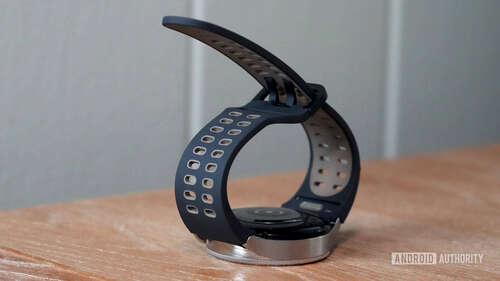
Kaitlyn Cimino / Android Authority
What about comfort? I feel smartwatches are far more congenial, especially when paired with a soft-touch strap. However, feel is subjective. If you regularly wear rings, you might feel more at home with a smart ring. Those who don’t normally wear rings would consider smartwatches a more pliable option.
Importantly, smart rings cannot be worn in certain situations. Metal rings cannot be safely worn while weightlifting, and you likely wouldn’t want to wear a smart ring while cooking. Smartwatches come with fewer restrictions.
Finally, thanks to their smaller footprint, the best smart rings tend to be more durable than smartwatches. While modern watches use tough materials, like titanium and sapphire glass, some designs are more vulnerable to damage than others. The Google Pixel Watch 2’s glass dome might be more intimidating to clumsy users than the Garmin Fenix 7 series. Smart rings sit closer to a user’s body, which may minimize knocks and scratches. That said, you likely wouldn’t want to wear a smart ring while rock climbing, building furniture, or other activities that require free movement of your fingers.
Features and health tracking
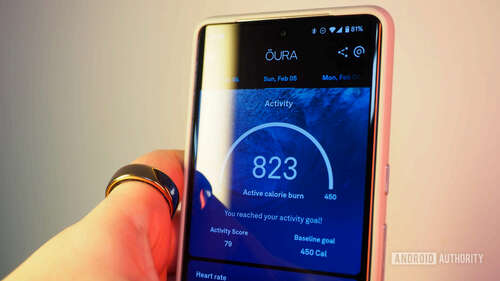
Rita El Khoury / Android Authority
As mentioned, smart rings lack displays, and most lack physical controls. They rely on a paired smartphone running a companion app to adjust settings, read out information, store health data, and update their software. This also means you cannot use some smart rings as standalone devices.
Users have multiple control options with smartwatches — from touchscreens and buttons to rotating cogs, microphones, and other touch-sensitive zones. They also rely on companion apps, but they aren’t the only method of control. Thanks to their displays, smartwatches can also provide more functionality to users, with their large displays and ability to ruin apps independent of a linked smartphone. LTE models can connect to the internet independently and offer messaging, SOS features, and wrist calls.
There is some feature overlap between the two devices, though. Both smartwatches and smart rings offer NFC and contactless payment support, which differs from model to model. AI functionality, a core feature of the Apple Watch Series 9 with Siri, can now be found on the Circular Ring Slim with its own assistant, Kira Plus.
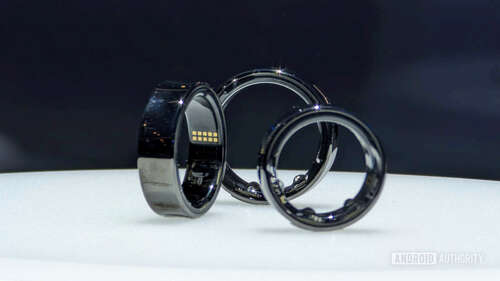
Hadlee Simons / Android Authority
Smart rings are stacked with sensors, making them great fitness tracking devices. The class leaders can track a user’s general activity, sleep metrics, and core heart rate data, while some provide more in-depth health checks, like breathing rate and blood oxygen saturation. Beyond fitness, smart rings don’t offer much functionality. Some models offer contactless payment support, while others are dedicated controls for smartphones and other devices. In short, they don’t fulfill as many functions as smartwatches.
Smartwatches are digital Swiss pocket knives offering deep health tracking, processing power, and additional smart features.
Smartwatches are digital Swiss pocket knives offering deep health tracking, processing power, and additional smart features. Smartwatches can also tell you the time — a surprisingly important detail often forgotten.
When it comes to killer features, smartwatches have smart rings beat. The Apple Watch Series 9 introduced onboard Siri processing, allowing users to request data from the voice assistant without a connection. Smartwatches also feature more specialized fitness features. The Galaxy Watch series was recently approved as a sleep apnea monitoring device, and its body composition sensor is unique in the sector.
Regarding accuracy, we’ve had doubts about the effectiveness of smartwatch data. I’d argue that monitoring trends over time is more important than bit-exact health information. However, considering that smart rings hug the body more closely, they should theoretically provide more consistent data than a smartwatch loosely strapped to a user’s arm. Of course, how your device fits you is the most important facet regarding accuracy.
Battery life
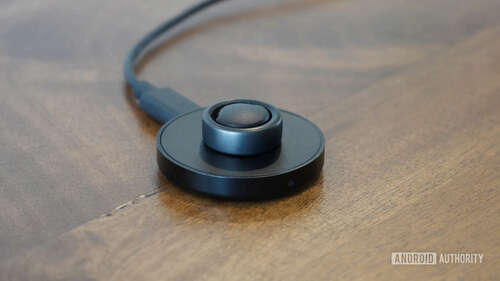
Kaitlyn Cimino / Android Authority
Smart rings use smaller batteries than smartwatches, but this doesn’t necessarily indicate shorter endurance. Thanks to their simple designs and lack of displays, smart rings are highly efficient, even if they cannot compete with smartwatches for size.
The Oura Ring 3 can go up to seven days on a single charge, and bests many of the high-end smartwatches on the market. However, enabling advanced features will trim this down. Even though the Apple Watch Series 9 has a larger battery, it can only top 36 hours. Other brands offer more performance, like the two-week Garmin Venu 3.
Pricing
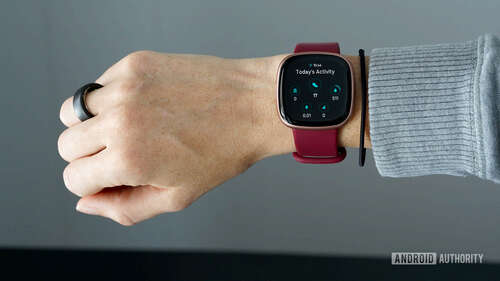
Kaitlyn Cimino / Android Authority
Smart rings span the entire price range. You can find budget options costing well below $100 and premium and luxury options coming in just short of $1,000. The Oura Ring 3 ($299.99 at Oura) strikes a solid balance between functionality and affordability, but a $5.99 monthly subscription is required to unlock all of its features.
The Apple Watch Series 9 ($392.67 at Amazon) has no subscription requirements but is pricier. However, you can opt for an LTE version, with which you’ll need to pay a monthly connection fee to your carrier. The Garmin Venu 3 ($449.99 at Amazon) is a more advanced health monitoring watch, but does cost a fair bit more.
Generally, smartwatches can be a steeper investment but, in turn, offer more functionality.
Smart ring vs smartwatch: Which should you buy?
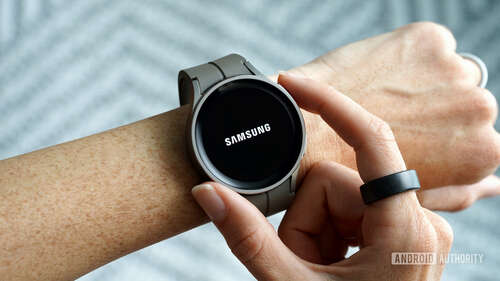
Kaitlyn Cimino / Android Authority
Although smartwatches and smart rings share many traits, they don’t cater to the same buyers. Smart rings offer users an inconspicuous, low-maintenance, and accurate health-tracking solution. Smartwatches aim to be the all-encompassing digital companion for your wrist, offering more than just health tracking. So which should you buy?
If a sleek and simple fitness tracking device that keeps out of your way appeals to you, opt for a smart ring. Granted, you may not find the Oura Ring 3 or Circular Ring Pro appealing, but with Samsung and Apple likely to enter the market in the future, we could see these devices grow in new ways. In this case, waiting a few years to see how this segment matures would be a sensible play. We did go hands-on with the Samsung Galaxy Ring at MWC 2024, and compared to the Oura Ring, Samsung’s band shows genuine promise.
Although smartwatches and smart rings share many traits, they don’t cater to the same buyers.
On the other hand, smartwatches are extensions of smartphones, standalone microcomputers for your wrist, and wide-reaching fitness monitors. They’re larger, more noticeable by others, and may be more delicate under certain circumstances. The variety of shapes, core functionality, and killer features may also appeal to those seeking something more specific. Importantly, they keep your hands free.
If you’re more serious about your health, require a device with a screen, or want to extend the reach of your smartphone, opt for a smartwatch.
The smart ring vs smartwatch debate ultimately comes down to choice. There is no “better” option, but one form factor will better suit your requirements.
FAQs
There are rumors that Apple is considering a smart ring to augment its iPhone series. As patents suggest, the ring would not house any health tracking features but rather alert users of notifications and act as an iPhone controller.
No, you cannot see messages on a smart ring. Smart rings do not have displays.
Yes, you can pay with a smart ring, but it depends on which you purchase. Some rings have NFC payments functionality baked-in.
If you have a pacemaker, it’s a good idea to contact your healthcare professional before purchasing a smart ring or smartwatch. Studies have found that some sensors, specifically bioimpedance sensors, could interfere with pacemakers. Importantly, not every smart wearable has a bioimpedance sensor.
Yes, smart rings make for excellent fitness tracking devices thanks to their tight fit on the body.
LTE-enabled smartwatches require data plans, but smartwatches that only have access to Wi-Fi networks do not require any data plans.

